Every project is made up of tasks, and the sequence of those tasks are often of the upmost importance. Certain tasks can’t begin until another one has finished, and vice-versa. In order to ensure that tasks are done in the correct order, project managers employ the use of Gantt charts and Gantt chart software to track the dependencies between their project’s tasks.
In order to talk about Gantt chart dependencies, though, we must first talk about Gantt charts.
What Is a Gantt Chart?
Gantt charts are a well-known project management chart. Gantt charts are visual tools created during the project planning phase and are used to show a wide range of project data as simply as possible with horizontal bars.
This horizontal bar chart is the easiest way to see how projects are scheduled over time. This includes which tasks must be completed, how long those tasks should take, who is responsible for which tasks, etc. Gantt charts also allow you to create and view milestones.
ProjectManager allows you to create a Gantt chart in minutes. And unlike other Gantt chart software, it features all four different types of Gantt chart dependencies, so you can quickly build a schedule and stick to it. Start hitting your milestones with a free trial of ProjectManager today.
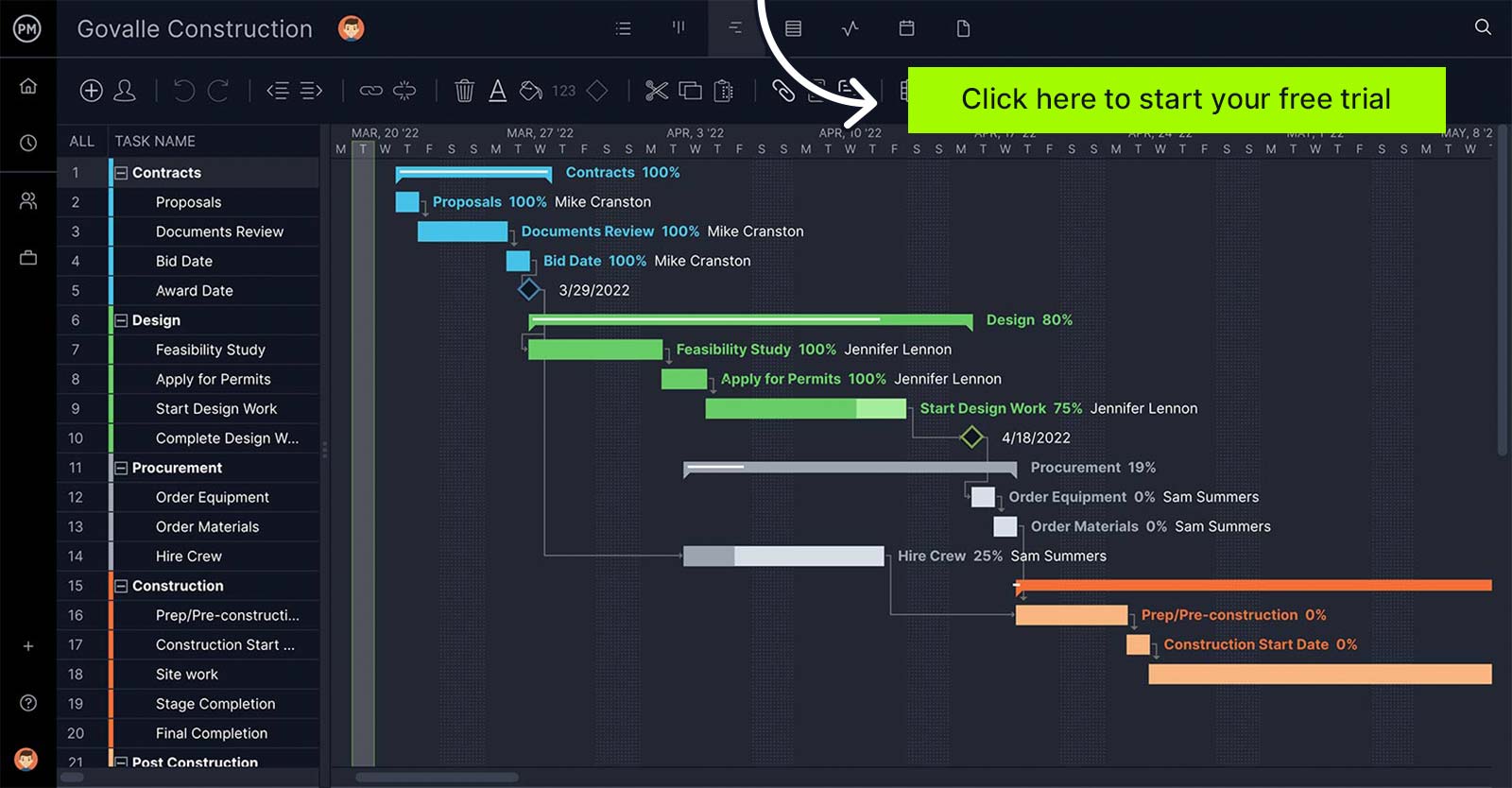
Gantt Chart Dependencies
Most of us understand dependencies in a broad sense: activities can be interrelated and influenced by one another. This holds true for Gantt chart dependencies. Also called a task dependency, a Gantt chart dependency refers to how project tasks are related. In most projects, there will be multiple tasks taking place at once or in quick succession. When this is the case, these tasks have an effect on one another and are known as Gantt chart dependencies.
On the Gantt chart itself, each task is represented as horizontal bars which show task duration. The longer the bar, the longer you have to complete the task. But, each individual task does not exist in a vacuum and is dependent on another. Each shares a unique relationship. Even the very first task in a project shares task dependencies with others. These Gantt chart dependencies are represented by lines between the horizontal bars.
Four Types of Gantt Chart Dependencies
Gantt charts are an excellent way to create and see tasks, but first you must know exactly how your tasks are related and how this will be illustrated. This is a critical part of task management. Depending on the task dependencies, the tasks themselves will look different on the Gantt chart. When you don’t know what these variations look like and what they mean, Gantt charts quickly go from being helpful to seeming jumbled and confusing.
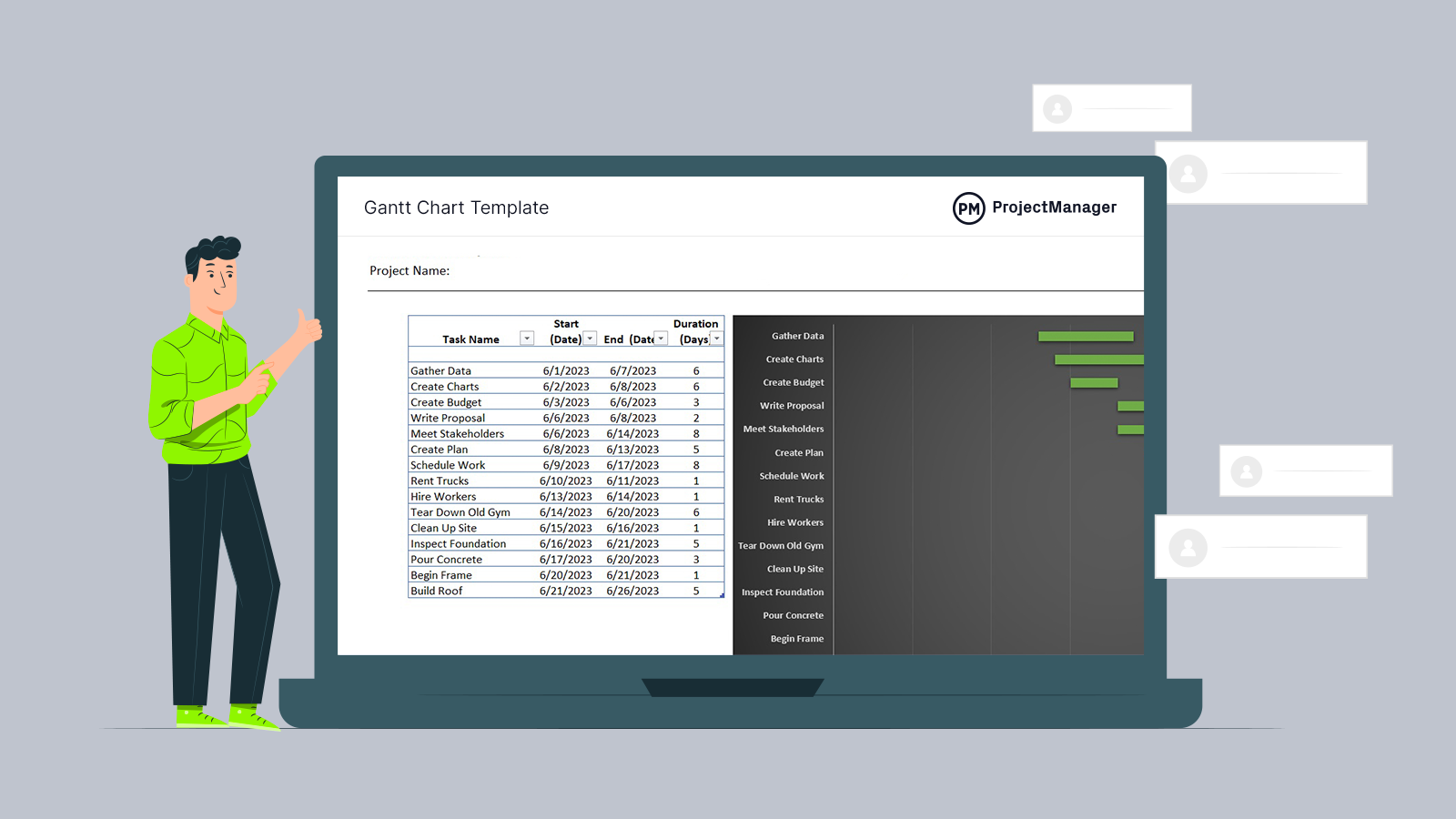
Get your free
Gantt Chart Template
Use this free Gantt Chart Template for Excel to manage your projects better.
Never fear. As long as you have a clear understanding of the four main dependencies, you’ll know exactly what you’re looking at, and you’ll be able to discern even more information from Gantt charts. Think of each of these task dependencies as key words in learning to speak Gantt chart.
1. Finish-to-Start Task Dependency
A finish-to-start dependency is extremely common and fairly simple to understand. This type of dependency occurs when the initial task must be completed for the next task to begin. As such, if task A is completed behind schedule then task B will begin behind schedule as well, creating a domino effect.
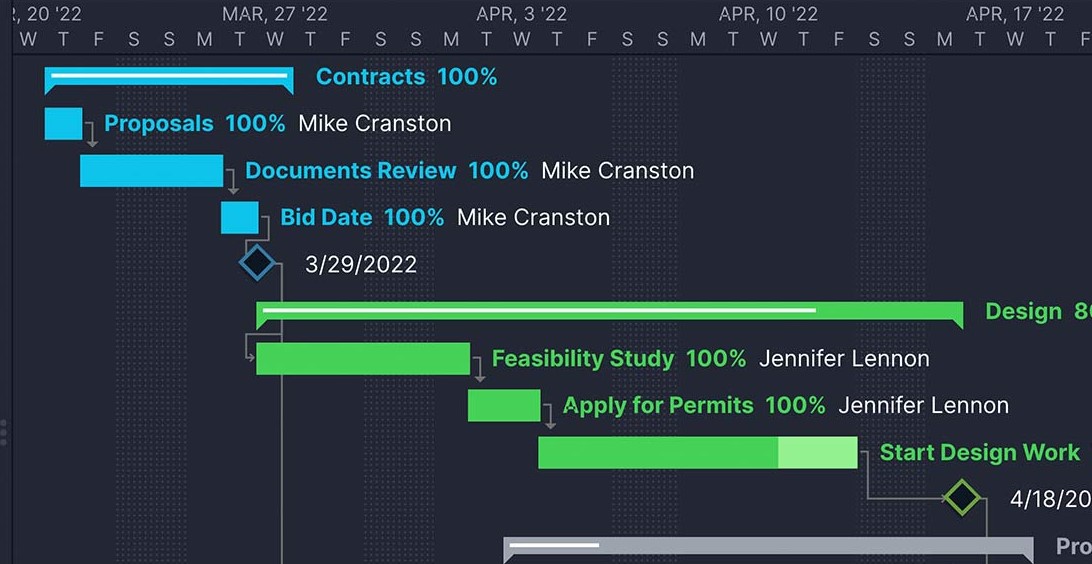
2. Start-to-Start Task Dependency
A start-to-start dependency occurs when a secondary task cannot begin until the initial task begins. Now, it’s important to note that the two tasks do not have to begin at the same time (and often do not). Task B can begin well after task A, so long as task A has started. In many cases, the initial task will even finish before the next task begins. But, because task A does not have to be completed before task B can begin, this is not a finish-to-start dependency.
3. Finish-to-Finish Task Dependency
A finish-to-finish dependency refers to a situation in which the initial task must be completed in order for the following task to be completed. Task A and task B are directly related, and these two tasks can even take place at the same time, but task B is totally contingent on task A. That said, task B does not have to be finished at the same time as task A.
4. Start-to-Finish Task Dependency
Start-to-finish dependencies are uncommon, though they do occur from time to time. This dependency is the inverse of a finish-to-start dependency, where the initial task must be completed to move onto the next. In a start-to-finish dependency, the initial task cannot be finished until the secondary task has begun. That being said, task B does not have to finish at the same moment task A begins.
Why are Task Dependencies so Important?
In a project, certain things must happen in a particular order for the end result to be a success. When they don’t, you end up with sometimes disastrous results. In other words, projects are not like a list of errands that you can run in any order you wish, as long as they all get done.
The only way to successfully execute a project is to plan tasks as they must be done, and understand their dependencies. When you can anticipate these task dependencies, you will be able to schedule them more accurately. For example, if you know Task B cannot begin until Task A is complete (finish-to-start dependency), you also know how these tasks need to be scheduled on a Gantt chart. Task A will be its own horizontal bar, as will Task B. There will be no overlap.
Understanding the task dependencies of your project is also one of the only ways to save your project from failure in the event something major goes wrong with a certain task. Because you know how each of your tasks is related, you can make adjustments to dependent tasks and hopefully save your project from preventable setbacks.
Gantt Chart Template
This free Gantt chart template for Excel allows you to create a project schedule based on tasks, their due dates and duration. You will not be able to use it to identify task dependencies, but you can upload it into ProjectManager to use a fully-featured Gantt chart with task dependency mapping and critical path analysis tools.
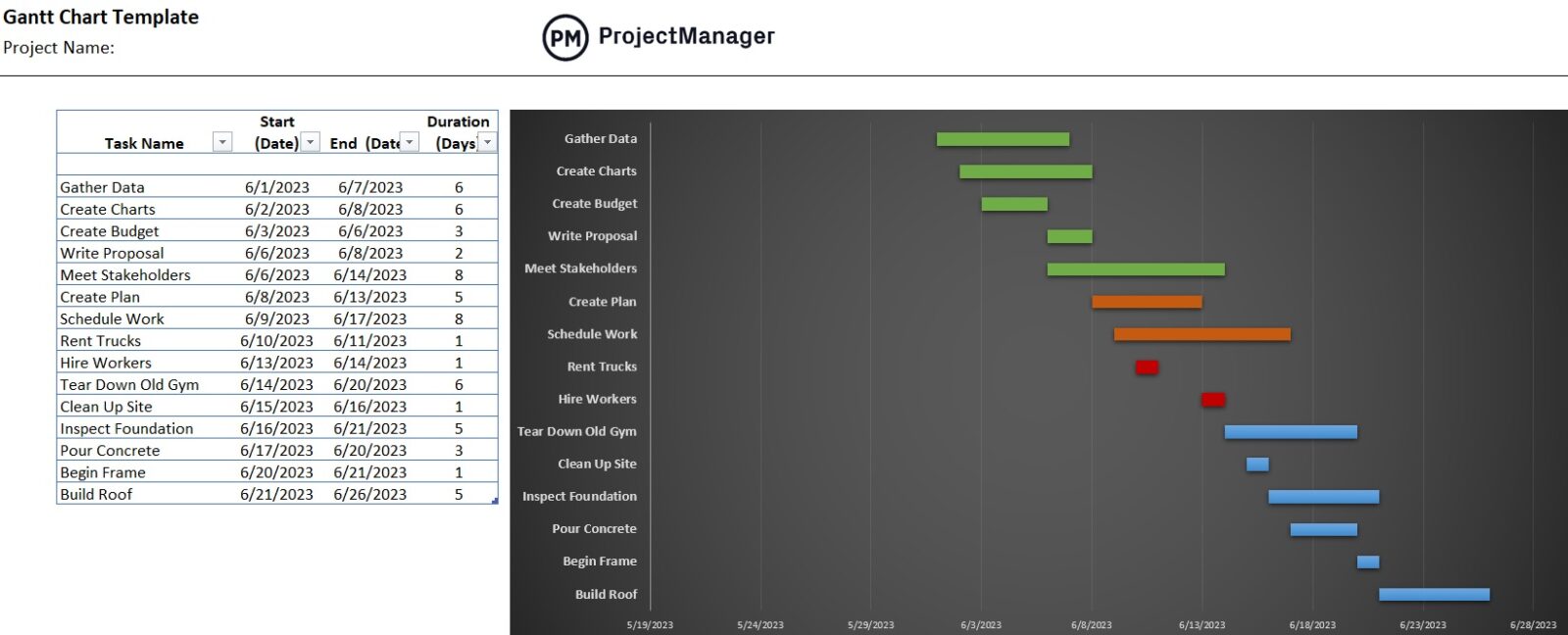
A Few More Task Dependencies Terms
If you plan to do more research on task and Gantt dependencies, there are a few key terms you’re guaranteed to see:
- Predecessor Tasks: Predecessor tasks are the tasks that come first. In order to understand predecessor tasks, just remember that these are always the tasks that must be completed or started before the next task can begin. For example, in the case of a Finish-to-Start task dependency, Task A is the predecessor task. In a Finish-to-Finish dependency, Task A is the predecessor.
- Successor Tasks: If you know what a predecessor task is, remembering the definition of a successor task will be easy. As the name implies, a successor task comes after predecessor tasks. It is dependent upon the initial task being completed or started. Many people assume that Task A is always the predecessor and Task B is always the successor. But, in a start-to-finish dependency, Task A is actually the successor.
- Lead: Things don’t always go exactly to plan, sure. But sometimes those changes are actually good things. Lead refers to how far ahead a task can be, assuming its predecessor task is also ahead of schedule. If Task A and Task B have a Finish-to-Start dependency, and Task A is completed ahead of schedule, Task B can begin with a “lead.” If Task A was originally scheduled to take 5 days to complete but only took 3, Task B will now have a 2 day lead.
- Lag: Lag is exactly what it sounds like; the amount of time behind schedule the successor task is, based on how much longer than planned the predecessor task took. This is something to avoid, yes, but when you understand Gantt chart dependencies it doesn’t mean your project is bound to fail. If Task A and Task B again have a Finish-to-Start dependency, and Task A is scheduled to take 7 days but ends up taking 10 days, Task B has a 3 day lag.
Try ProjectManager for the Complete Gantt Chart Experience
By now, you’re probably tired of reading about the importance of task dependencies and are feeling ready to put them to work. Luckily, ProjectManager offers online Gantt charts that make it simple to plan, schedule and update your task dependencies in only a few steps.
Once you have created a task and input important details like name, assignee, start date, completion date, etc. you will see a horizontal bar appear on your Gantt chart. The length of the bar will reflect the duration of the task.
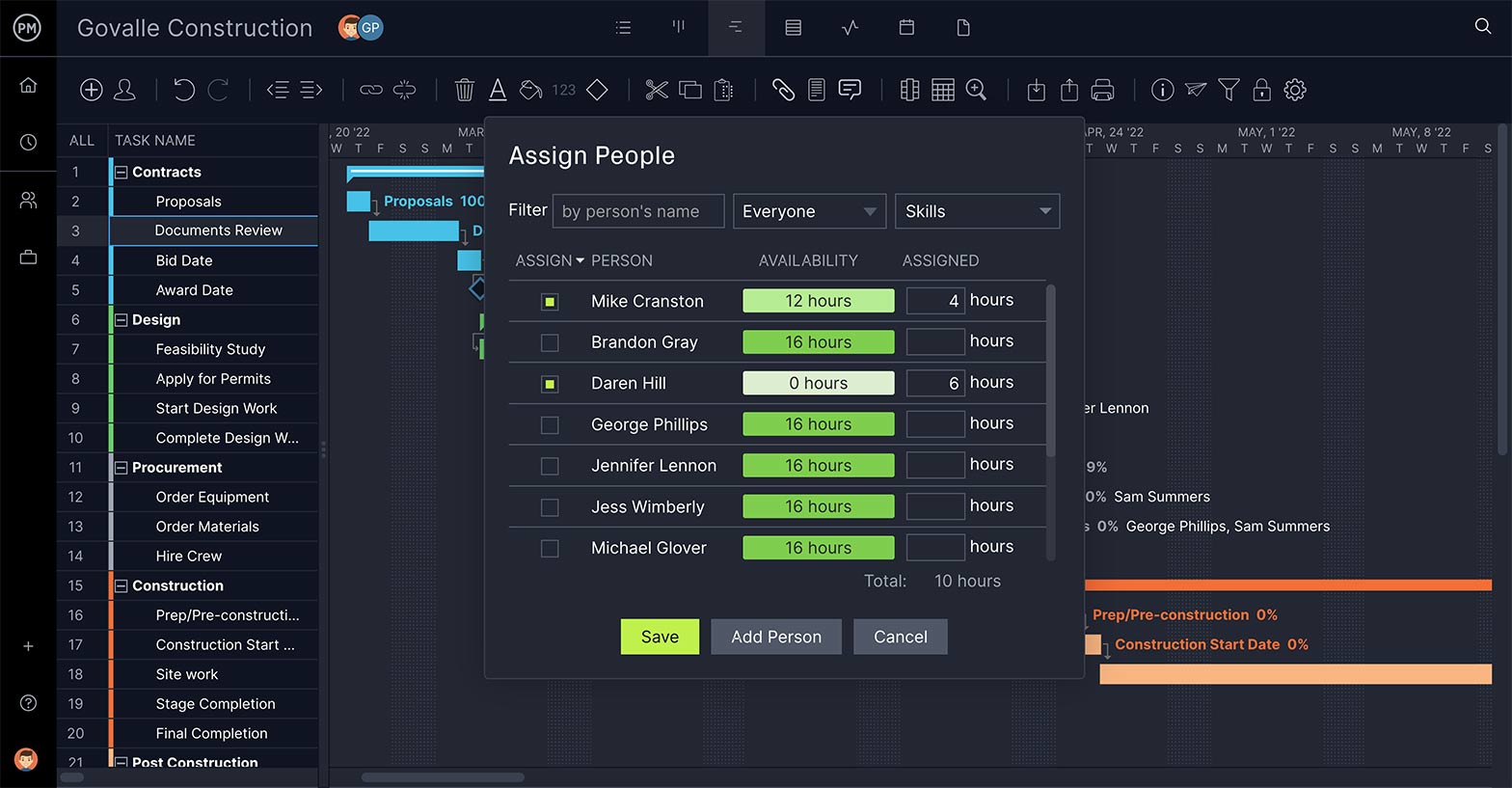
Collaborate on Tasks, and Task Dependencies Won’t Hold You Up
Collaborate with team members every step of the way by leaving comments and attaching any documents you desire. This way, everything any team member needs is in one location.
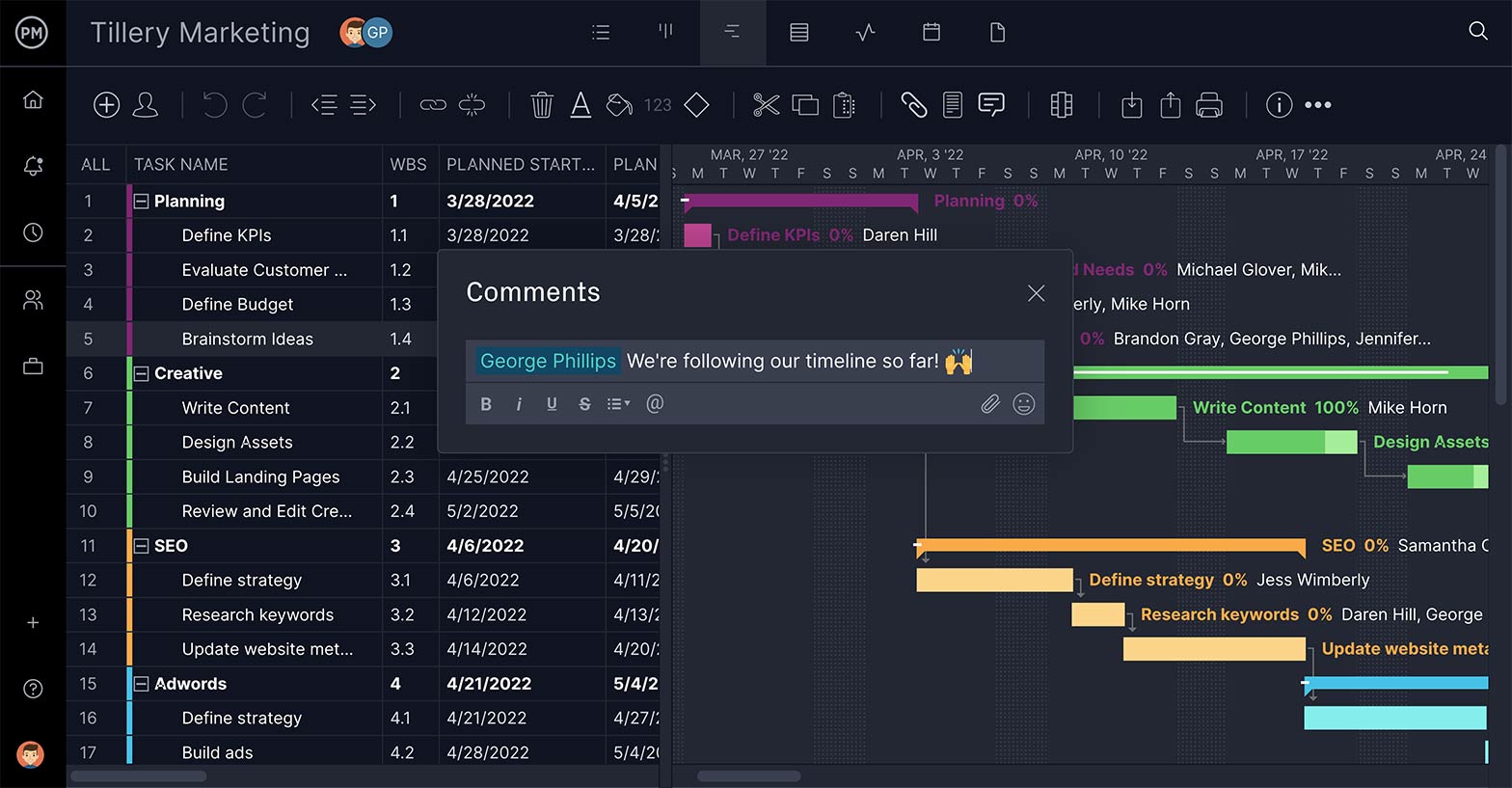
How to Make a Gantt Chart on Mac
Displaying the Critical Path on a Gantt Chart
ProjectManager is a cloud-based project management software that has a best-in-class Gantt chart you can use to track your tasks and their dependencies. With it, you can easily plan, monitor and report on projects while giving your team a platform to collaborate and achieve more. Use ProjectManager for your next project by trying it for free today!

